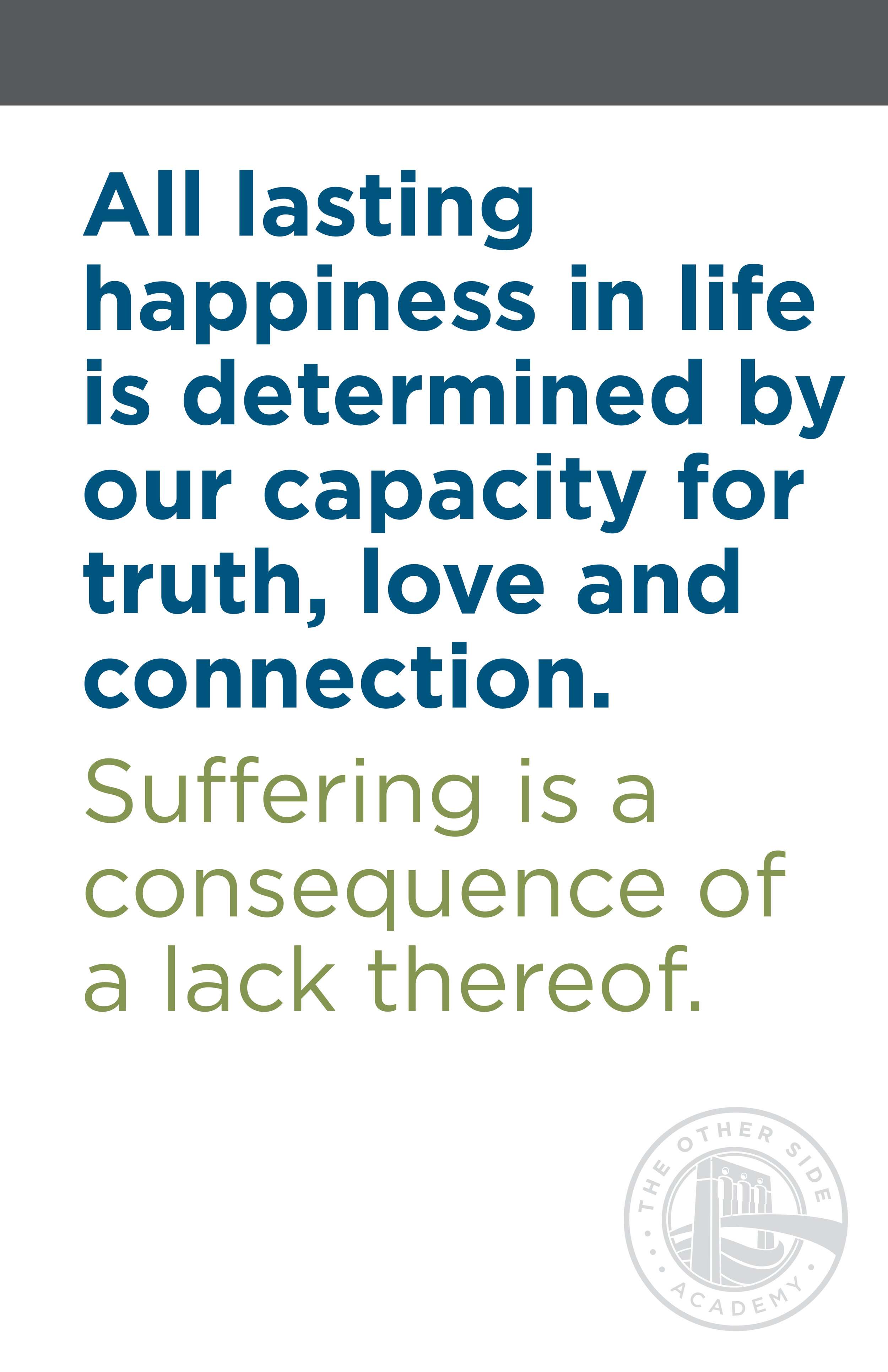Philosophy
We Save Lives By Changing Behavior
The Other Side Academy is based on the methodology developed over the last 40 years known as the Therapeutic Community Model. The model is heavily based on extensive study and learning from The Delancey Street Foundation, based in San Francisco and 4 other locations in the U.S. as well as other successful therapeutic communities.
Many individuals admitted to The Other Side Academy have a history of destructive and toxic lifestyles which have eroded social efficacy, education/vocational skills, positive community and family ties. For them, integration back into society involves relearning or re-establishing healthy functioning, skills and values as well as regaining physical and emotional health.
Other students have never acquired functional lifestyles. For these people, the Academy could be their first exposure to orderly living. Recovery for them will involve learning the behavioral skills, attitudes and values associated with socialized living.
Rather than hire professional therapeutic staff, we have hired ex-convicts and ex-addicts who graduated from therapeutic communities to train our students, manage the facility and help run our vocational training schools.
The Other Side Academy adheres to the holistic principles of the therapeutic community that encourages individuals to take part in their treatment process as full partners, not as objects or patients.
The Other Side Academy is a drug-free residential setting that uses a hierarchical model with treatment stages that reflect increased levels of personal and social responsibility. Peer influence, mediated through a variety of group processes, is used to help individuals learn and assimilate social norms and develop more effective social skills.
Research spanning more than 40 years has identified key concepts, beliefs, clinical/educational practices and program components common to most therapeutic community programs. These elements reflect the two principles that drive the Academy's operations: the community as a change agent and the efficacy of self-help.
Individuals admitted to the Academy encounter a highly structured family environment in which honesty, trust and mutual self-help are the foundation of the treatment process. In addition, daily seminars, group meetings and individual activities are offered to all clients. Work responsibilities are assigned that teach basic cooperation, respect and discipline. This therapeutic approach focuses on changing negative patterns of thinking and behavior through individual and peer interactions, group sessions with peers, community-based learning, confrontation and role-playing.
The Other Side Academy students are expected to become role models who actively reflect the values and teachings of the community. Ordered routine activities are intended to counter the characteristically disordered lives of these students and teach them how to plan, set, and achieve goals and be accountable for their thoughts, feelings, decisions and actions.
In addition to the importance of the community as a primary agent of change, the second fundamental principle is “self-help”. Self-help implies that the individuals in treatment are the main contributors to the change process. “Mutual self-help” means that individuals also assume partial responsibility for the recovery of their peers—an important aspect of an individual’s own treatment. The power of mutual self-help is expressed in the statement: When “A” helps “B”, “A” gets better.
Ultimately, participation in The Other Side Academy is designed to help people appropriately and constructively identify, express, and manage their feelings. The concepts of “right living” (learning personal and social responsibility and ethics) and “acting as if ” (behaving as the person should be rather than has been) are integrated into the workday as well as the Academy groups, meetings and seminars. These activities are intended to heighten awareness of specific attitudes or behaviors and their impact on oneself and the social environment.





